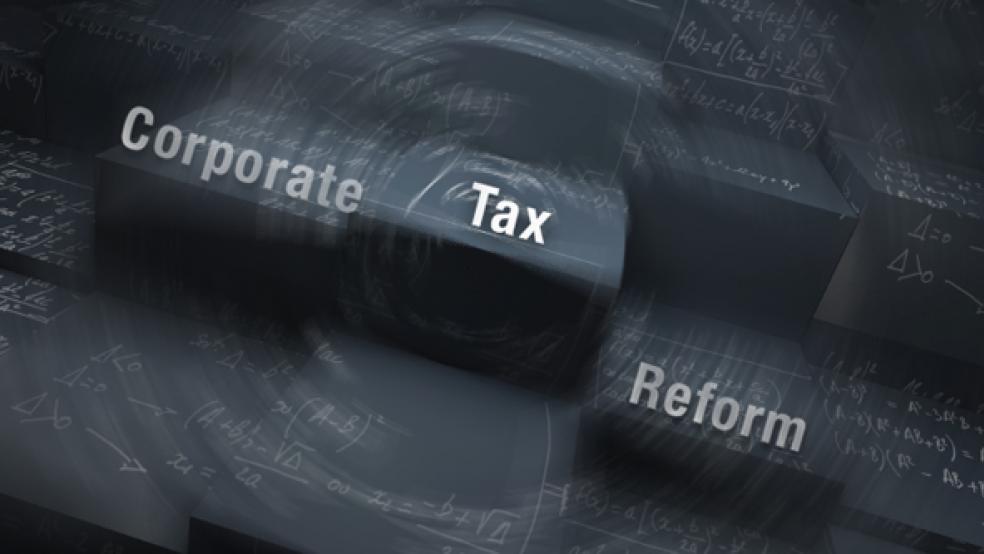The juxtaposition between the announcement of tax plans from Mitt Romney and Barack Obama almost assuredly comes as nothing more than an accident of timing. The President needs to offer some sort of positive economic platform after his budget proposal flopped last week on Capitol Hill and around the country. Romney needs to give conservatives a reason to rally to his side rather than simply shy away from his competitors in the Republican presidential nomination contest, and to provide a media narrative that distracts from Rick Santorum’s national momentum. Even so, the two plans show the difference between the two men in economic depth and willingness to innovate.
The President has stoked the class-warfare fires by claiming that the increase would only mean that the rich are paying their “fair share.”
The two plans have somewhat different scope, with Romney’s more of a comprehensive plan while Obama focuses only on corporate tax overhaul. The change in Romney’s plan that will draw the headlines is an across-the-board 20 percent reduction in tax rates, lowering the highest rate to 28 percent, the same rate Ronald Reagan set in his transformational tax reforms. The Romney campaign estimates that this change alone will “increase wages in non-corporate businesses by 6 percent, increase investment by 10 percent, and increase business receipts by 16 percent,” citing three different studies authored by Dr. Robert Carroll of American University, a former member of the Council of Economic Advisers and a former top tax analyst at Treasury. Romney will argue that the impact of that freed income – far more than the ridiculously irrelevant $20 per week in the payroll-tax holiday – will generate real, long-lasting economic growth and job creation.
Reducing rates will generate a significant amount of controversy. Obama wants to campaign on repealing the Bush-era tax rates for the highest bracket, which are due to expire at the end of the year. The President has stoked the class-warfare fires by claiming that the increase would only mean that the rich are paying their “fair share,” although the actual impact of that increase will be to remove capital from investment markets and to slow economic growth – an outcome predicted by the CBO in their analysis of Obama’s troubled budget proposal.
Romney doesn’t stop there, however. Where Obama has proposed increasing the capital-gains rate from 15 percent to 20 percent, Romney insists on keeping the rate at its current level – for higher-income earners. For those making less than $200,000 per year, Romney’s plan would zero out the capital-gains tax rate, along with income tax on interest and dividends. That would encourage more investment from the middle class while maintaining tax-rate stability for higher-income earners, providing more capital to the market and a broader base for economic growth.
The elimination of interest taxes would also encourage savings as well as investment, making the markets healthier rather than encouraging the rapid acquisition of debt. An economic adviser to Romney hinted to the Wall Street Journal that Romney might consider changing the treatment of carried-interest income from capital gains to normal income to make sure that the capital-gains rate encouraged actual investment. Romney also wants a repeal of the Alternative Minimum Tax, an annual problem that each Congress has to defuse through temporary waivers in order to keep the middle class from paying a huge tax hike.
All of this is far more bold than any tax reforms produced by the White House, and it falls squarely in line with conservative thinking. In fact, American Enterprise’s economic analyst James Pethokoukis praised Romney’s plan yesterday as “the full Reagan.” However, the comparison of reforms proposed in the corporate tax structure is what really separates the two on the basis of comprehension of economic reality – and on prioritizing growth ahead of government revenues.
Obama also wants to do what almost no other nation does, which is impose a tax on profits earned overseas.
Both Obama and Romney propose lowering the corporate tax rate from its current world-highest 35 percent, Obama to 28 percent, Romney to 25 percent . Obama’s rate change doesn’t change the competitive position of the US by much; with combined state and federal taxes, we would go from the first-highest tax burden on business to fourth. On top of that, though, Obama proposes to close enough “loopholes” to increase tax revenues from corporations by $250 billion – increased costs that businesses would pass onto consumers and workers in the form of higher prices and lower wages. Obama also wants to do what almost no other nation does, which is impose a tax on profits earned overseas. Obama’s “global minimum tax” is based on his notion of fairness, and it goes against the advice of Obama’s own Jobs Council, called into being last year for Obama to claim that he was focused like a laser on job creation, as well as Obama’s own deficit commission:
“While most other developed nations have adopted territorial systems that exempt most or all foreign income from taxes when they are repatriated, the U.S. subjects all worldwide earnings to the corporate income tax when they are brought home to the U.S. This approach actually encourages U.S. companies to keep their earnings abroad rather than investing them here at home. Adopting a territorial tax system would bring us in line with our trading partners and would eliminate the so-called “lock-out” effect in the current worldwide system of taxation that discourages repatriation and investment of the foreign earnings of American companies in the U.S.”
Where will the money go? According to an analysis by Pethokoukis, part of it funds a decrease in the corporate tax rate for manufacturers to 25 percent. Much of it will fund more of Obama’s new stimulus plans for “clean energy,” a boondoggle that so far has produced bankruptcies and massive taxpayer losses at Solyndra and other Obama-favored green-tech firms. Instead of making American companies more competitive on the world stage and encouraging more investment at home, Obama’s plan shakes down businesses to generate another slush fund for more gimmicky interventions.
Contrast that with Romney’s approach. His plan also lowers the corporate tax rate and closes some tax breaks, but it also reforms the US corporate tax to a territorial system that matches the approach of our partners. That would allow American companies to bring profits back to the US without a tax penalty, allowing for investment in our own economy. The decreased costs would also make American companies more competitive overseas, and the simpler tax code puts smaller businesses at less of a disadvantage in compliance efforts. Elimination of the corporate AMT, with its rules on depreciation costs, would spur more capital investment by corporations, providing even more of an economic boost.
The contrast between the two plans could not be more plain. Romney provides a path to a high-growth economy by simplifying taxes and allowing people to keep more of what they earn, and spend it more freely. Obama’s plan seizes more capital from businesses so that he and his team can choose where investment goes and who benefits from it, rather than focus on growth and prosperity.






